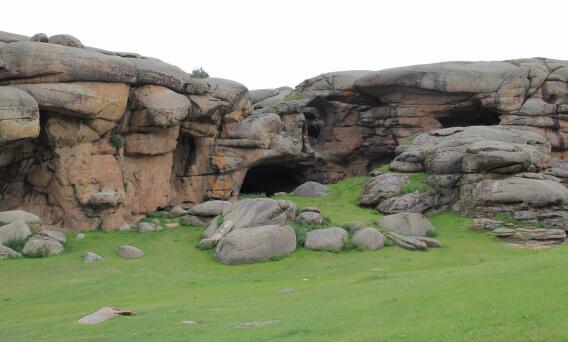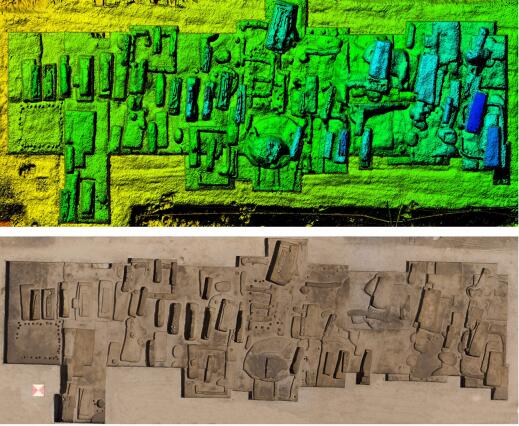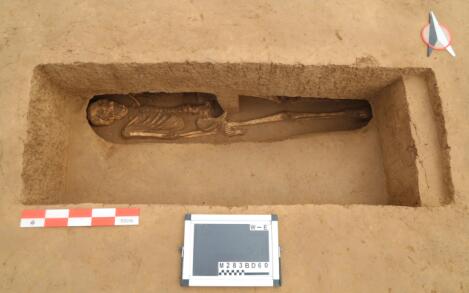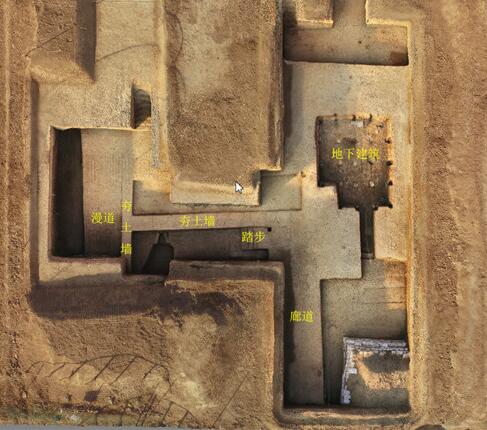Top Ten Archaeological Discoveries in 2017 Announced
From:Chinese Archaeology NetWriter:Li xinweiDate:2018-04-12
After two days of presentations and discussions, the top ten most significant archaeological discoveries in 2017 was announced on April 10 in Beijing in a news release conference organized by the China National Administration of Cultural Heritage, the Cultural Relics News and Society of Chinese Archaeology. They are:1 the Tongtiandong cave site in Jeminay County, Xinjiang
2 the Jiaojia Neolithic site in Zhangqiu City, Shandong
3 the Yangguanzhai Neolithic site in Gaoling County, Shaanxi
4 the Western Zhou period Yaoheyuan site in Pengyang County, Ningxia
5 the Zheng-Han ancient city site in Xinzheng City, Henan
6 the Yueyang ancient city site of the Qin and Han Dynasties in Xi’an City, Shaanxi
7 the Mausoleums of the Eastern Han Dynasty in Luoyang City, Henan
8 the Shangqinggong temple in the Longhushan montains in Yingtan City, Jiangxi
9 the Jin Dynasty Baomacheng temple of the god of the Changbai Mountains in Antu County, Jilin
10 the Jiangkou wrecked treasure site in Pengshan County, Sichuan

Distant view of Tongtiandong Cave Site
1. the Tongtiandong cave site in Jeminay County, Xinjiang
The cave site excavated by the Xinjiang Institute of Archaeology and Cultural Relics and Beijing University consists of the deposit from the late Paleolithic to the bronze period and provides a long sequence of cultural history in northern Xinjiang. Wheat grains indicate that the site had been an important stop on the road of the diffusion of wheat agriculture.More Details: http://kaogu.cn/en/Special_Events/Top_10_Archaeological_
Discoveries_in_China_2017/2018/0411/61624.html

House remain distribution in the north area
2. the Jiaojia Neolithic site in Zhangqiu City, Shandong
More Details: http://kaogu.cn/en/Special_Events/Top_10_Archaeological_
Discoveries_in_China_2017/2018/0411/61621.html

Side-cave tombs M283
This large Miaodigou period settlement excavated by the Shaanxi Provincial Institute of Archaeology wins the horror for the second time with the discovery of a cemetery of more than 300 burials. The side-chamber burials, which had been regarded as the character of prehistoric cultures in the northwestern areas, are more than 600 years earlier than those in the Gansu area, indicating that the Miaodigou culture had played an important role in the development of the northwestern cultures.
More Details: http://kaogu.cn/en/Special_Events/Top_10_Archaeological_
Discoveries_in_China_2017/2018/0411/61622.html

Unique knife-handle shaped horse pit
The site excavated by the Ningxia Provincial Institute of Archaeology and Cultural Relics consist the remains of the Late Shang, Western Zhou and Eastern Zhou periods. Main discoveries include the Western Zhou period burials, horse pits, chariots pits and sacrificial pits. The oracle bones with inscriptions in a pit are the most northwestern samples and demonstrate the strong control of the Western Zhou Dynasty to this area.
More Details:http://kaogu.cn/en/Special_Events/Top_10_Archaeological_
Discoveries_in_China_2017/2018/0412/61661.html
5. the Zheng-Han ancient city site in Xinzheng City, Henan
The city site had been the capital of the Zheng and Han states in the Spring and Autumn and the Warring States periods. The excavation launched by the Henan Provincial Institute of Archaeology and Cultural Relics unearthed the gate and defense system of the walled city, and large pits with chariots and horses.
More Details:http://www.kaogu.cn/en/Special_Events/Top_10_Archaeological_
Discoveries_in_China_2017/2018/0418/61718.html

No.3 Building Remain in the No.3 Ancient City
The city site had been the capital of the Qin State in the Warring States period and the early Western Han Dynasty. Excavation directed by the Institute of Archaeology, Chinese Academy of Socials Sciences found large palace foundations and special constructions including a royal bathroom.
More Details:http://www.kaogu.cn/en/Special_Events/Top_10_Archaeological_
Discoveries_in_China_2017/2018/0413/61682.html

Distant view of Zhucang Tomb M722
The Luoyang municipal Institute of Archaeology and Cultural Relics and Zhengzhou University, after several years of survey and excavations, discovered the mausoleum consisting of an inner yard, a outer yard, rammed earth foundations of large constructions, and a large tomb with a huge mound above and a long passage towards the chamber.
More Details:http://www.kaogu.cn/en/Special_Events/Top_10_Archaeological_
Discoveries_in_China_2017/2018/0424/61777.html
8. the Shangqinggong temple in the Longhushan montains in Yingtan City, Jiangxi
This typical Daoism temple excavated by the Jiangxi Provincial Institute of Archaeology and Cultural Relics shows a clear sequence of construction development from the Song to the Qing Dynasties. The unearthed architectures and artifacts are important for the research on evolution of Daoism from the 11th to the 19th centuries.

Rammed-earth platform JZ4's orthographic view
More Details: http://kaogu.cn/en/Special_Events/Top_10_Archaeological_
Discoveries_in_China_2017/2018/0411/61623.html

Copper coin inscribed “Da Shun Tong Bao” (Zhang Xianzhong named his reign as "Da Shun" and produced coins of "Da Shun Tong Bao" as the official currency)
10. the Jiangkou wrecked treasure site in Pengshan County, Sichuan
The excavation launched by the Sichuan Provincial Institute of Archaeology and Cultural Relics and the Underwater Heritage Preservation Center of the China National Administration of Cultural Heritage prove that wrecked treasures of the Daxi government rebelled Zhang Xianzhong is not just a legend. More than 30,000 gold and silver coins and artifacts discovered from the river bed are significant for the research on local history of the late Ming Dynasty.
More Details: http://kaogu.cn/en/Special_Events/Top_10_Archaeological_
Discoveries_in_China_2017/2018/0411/61620.html
(Photograph:China Cultural Relics News)


